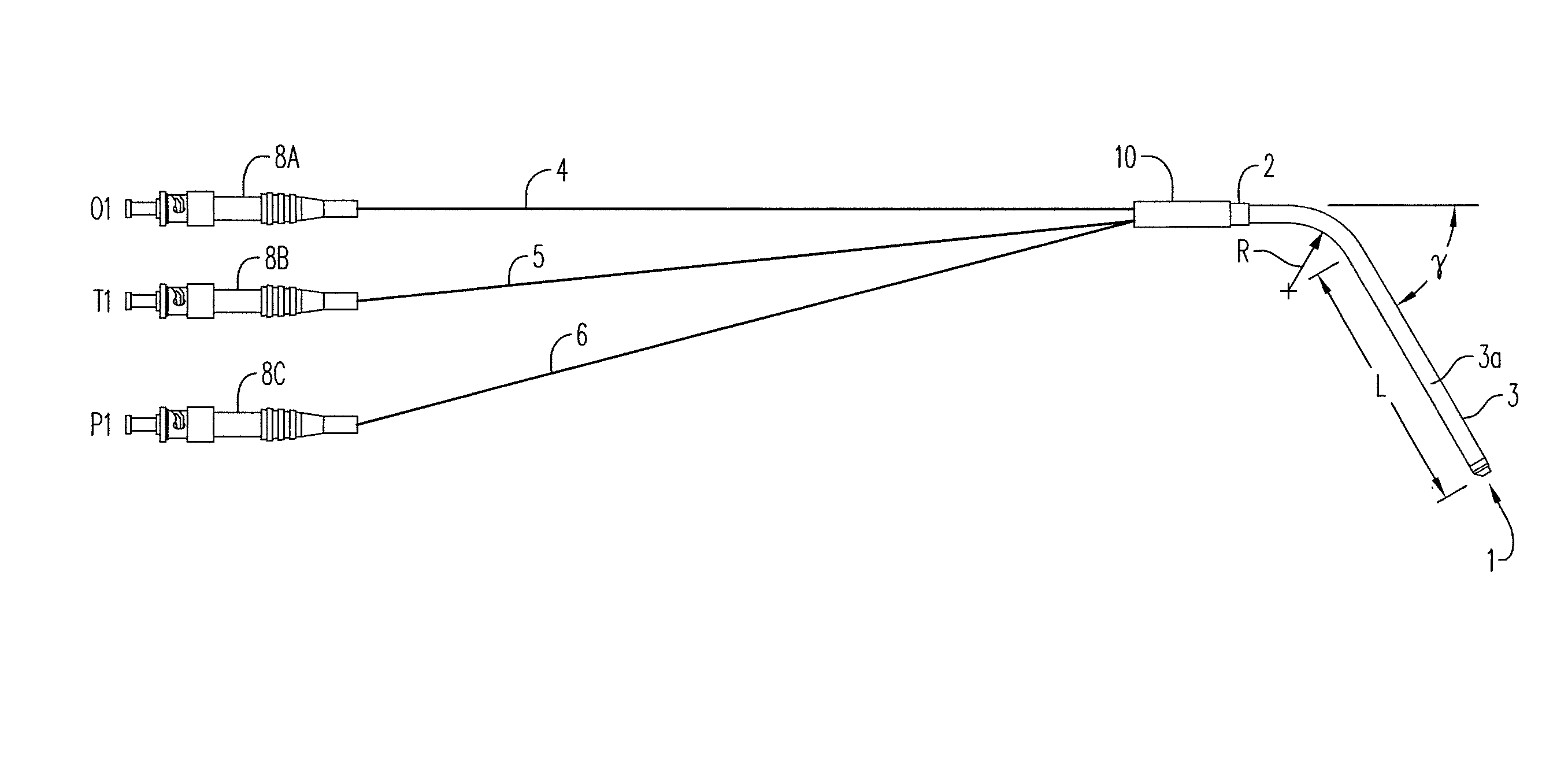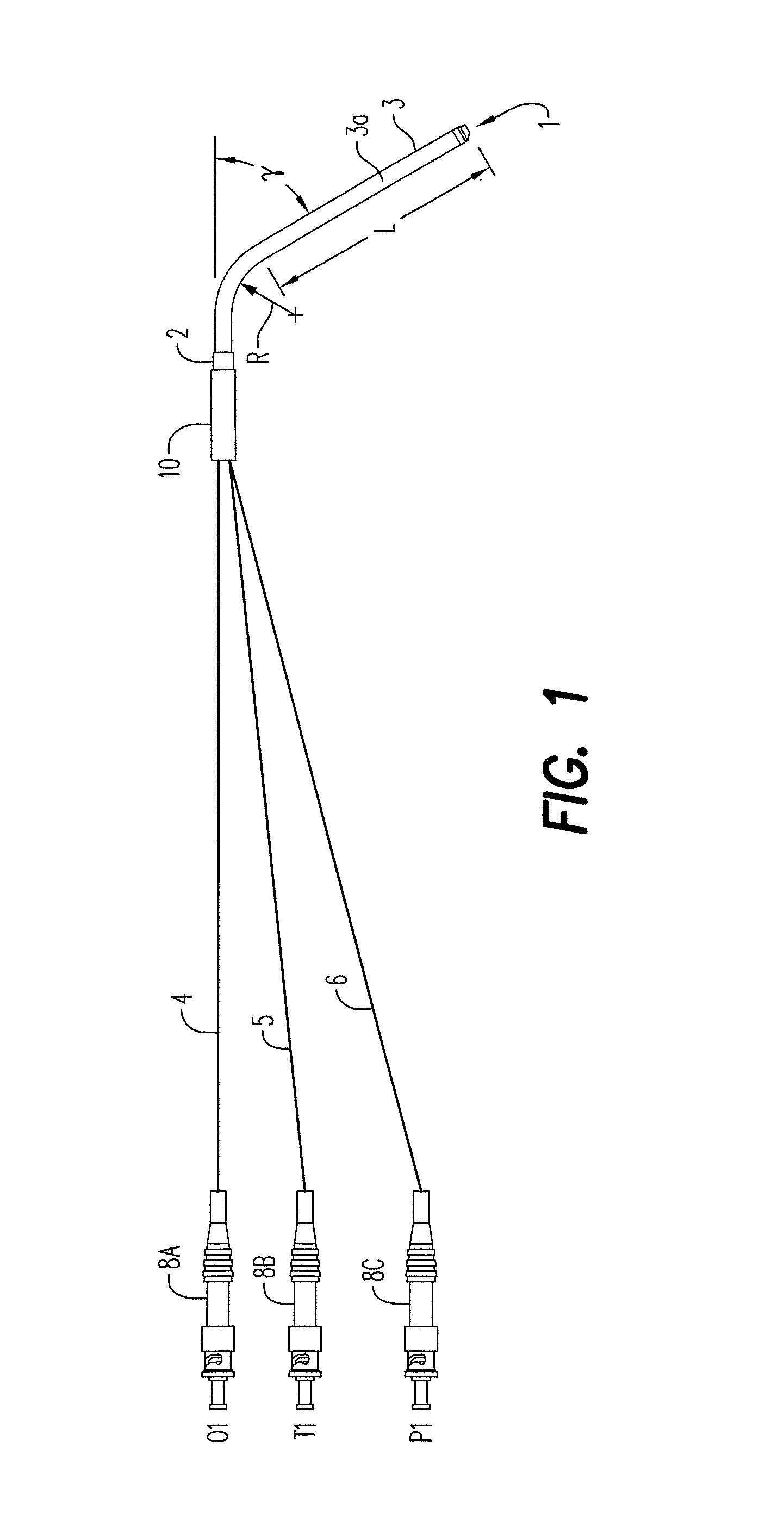Optical probe containing oxygen, temperature, and pressure sensors and monitoring and control systems containing the same
a technology of oxygen and temperature sensors, applied in the field of optical probes, can solve the problems of fuel tank penetration, fuel tank explosion potential upon ignition, and unplanned explosion of aircraft fuel tanks, and achieve the effects of improving accuracy, real-time oxygen concentration determination and calculation, and improving monitoring and control of oxygen levels
- Summary
- Abstract
- Description
- Claims
- Application Information
AI Technical Summary
Benefits of technology
Problems solved by technology
Method used
Image
Examples
Embodiment Construction
[0047]As used herein, the term “about” in connection with a numerical value or range of numerical values denotes somewhat above and somewhat below the stated numerical value, to a maximum deviation of ±10%.
[0048]A particular embodiment of an integrated oxygen, temperature, and pressure probe is shown schematically in FIG. 1. Probe tip 1 is disposed at one end of probe tube 3. At the other end of probe tube 3 is disposed probe cover 2, adjacent to heat shrink tube 10. The probe tip 1 contains an oxygen sensor, a temperature sensor, and a pressure sensor, all connected to optical fibers (4, 5, and 6) (e.g., 1000-1100 micron fiber is generally suitable, however other fiber sizes can be used) enclosed within a polymeric tube (e.g., PTFE tube). In the illustrated embodiment, each optical fiber is connected to an optical connector (8A, 8B, and 8C) suitable for connection to an optoelectronic monitoring and / or control system (not shown). FIG. 1 provides representative dimensions with respe...
PUM
| Property | Measurement | Unit |
|---|---|---|
| pressure | aaaaa | aaaaa |
| temperature | aaaaa | aaaaa |
| sizes | aaaaa | aaaaa |
Abstract
Description
Claims
Application Information
 Login to View More
Login to View More - R&D
- Intellectual Property
- Life Sciences
- Materials
- Tech Scout
- Unparalleled Data Quality
- Higher Quality Content
- 60% Fewer Hallucinations
Browse by: Latest US Patents, China's latest patents, Technical Efficacy Thesaurus, Application Domain, Technology Topic, Popular Technical Reports.
© 2025 PatSnap. All rights reserved.Legal|Privacy policy|Modern Slavery Act Transparency Statement|Sitemap|About US| Contact US: help@patsnap.com



